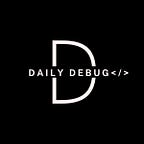How to build your own resume
Weather you are starting your career or looking for landing a new job, a well crafted resume is the first thing you will need.
Nowadays in the market, there are so many tools and automated resume-building apps available, and there are so many people on social media giving their tips for building the resume, well there is nothing wrong with listening to them and improving your techniques.
This article will mostly help the people who already have some experience in their respective fields.
Purpose of this article -
After finishing this article, if you follow all the steps you will be able to draft a resume all by yourself. The purpose of this article is to teach you how to build your resume in the easy way.
Where to start?
Well, you have to do your homework before you start doing anything, avoid starting to write your resume without any preparation.
There are a few points you need to note down or are prerequisites for you to know before you start writing your resume, go through the following points carefully and have these details ready with you .
- Start making notes about what work you do during your daily office hours, whether it’s planning meetings, scrum meetings, development work, requirement analysis or any other kind of work according to your role and responsibilities, think about your day and write it down.
- List down your technical and non technical skills, for example if you are someone working as a software developer, you should list down all the programming languages, databases, cicd tools etc.
- If you are an experienced person you must have worked in more than one organisation, write down the roles and responsibilities you performed in previous organisations, projects you have worked
- Ask yourself why you want a change in your job that will simply be your goal or career objective, whether you want to grow your career or look for better opportunities so that you can upskill or work on more challenging work and bring value to the organisation.
- List down all the projects you have worked on, accomplishments, awards, appreciations, certifications etc
Now all this was the data you will need when you actually start writing your resume.
Things to keep in mind :
- Your resume should not be more than 2 pages. ( Ideally, it should be one page only ).
- You should keep it simple, and avoid using too much formatting and Colors.
- It should be informative but not too much that interviewer will be confused about what you actually do.
- Use the important keywords which describes your skill set.
- Use bullets to highlight multiple points.
- Read your resume over and over again till you make it to the final draft.
- Highlight important things.
- Use clean easy to read format , avoid adding too many tables.
- Don’t lie on your resume, most of the interviewers will evaluate you based on what you have mentioned in your resume.
What shall you cover ?
1. Header
Start with your full name and role followed by your contact details, and mention your working mobile number and email address, you can also add your LinkedIn profile, and git hub profile(optional).
2. Summary
Write a strong summary statement, Your summary statement should be a brief introduction that highlights your skills and experience. It should be tailored to the specific job you’re applying for and showcase your unique qualifications.
3. Career Objective
They shall include your short-term and long-term career goals, and how you want to grow in the future. This should describe your career path going forward and should comply with what job you are applying for.
4. Skill’s/Tools/ Technologies
As we have already made the list of all these topics add all those points here, This section should describe your technical and non-technical skills.
5. Experience/Employment History
Mention all previous organisations, and what role and responsibilities you had there in this section, start with your current organisation and move backwards till your first organisation . While adding previous employment data, your role and dates are very important, pay attention to these details.
Your employment history section can be divided into 3 parts ,
- Name of the organisation(year From and To)
- Role
- Responsibilities – ( Dont forget to add all the things you were responsible for at your role )
6. Qualification
Your highest degree is enough in this section, mention the degree and university details and year of passing, that is all you need to add in this section.
7. Certification/Awards/achievements (optional)
Add all your certification list, awards and appreciation you have received in your career to date here.
That’s all You have now all the details and steps you need to follow to build your professional but ideal resume.
Note – you shall avoid writing project details as it will unnecessarily increase the size of your resume, but you should keep brief notes to yourself about all the projects you have worked on and should be able to answer the questions asked during the interview about project details.
If this helps you Give a clap and follow for more such articles !!
